Table of Contents
Remembering Martial Solal (1927-2024).
Martial Solal, born August 23, 1927 in Algiers (French Algeria) and died December 12, 2024 in Chatou (Yvelines), is a French jazz pianist, composer, arranger and conductor.

His career began in the 1950s, during which he recorded notably with Django Reinhardt and Sidney Bechet. At Club Saint-Germain, he accompanied the greatest American musicians of the time: Don Byas, Clifford Brown, Dizzy Gillespie, Stan Getz and Sonny Rollins. He recorded more than a hundred records solo, in a trio or with different big bands, as well as in a duo – a formula he particularly likes -, with among others Lee Konitz, Michel Portal, Didier Lockwood, John Lewis and David Liebman.

Solal does not limit himself to the jazz scene: he writes numerous symphonic works played in particular by the new philharmonic orchestra, the national orchestra of France or the Poitou-Charentes orchestra. He also composes several film scores, notably for Jean-Luc Godard (À bout de souffle) or for Jean-Pierre Melville (Léon Morin, priest).

Martial Solal’s style, virtuoso, original, inventive and full of humor, is based in particular on an exceptional talent for improvisation served by an impeccable technique that he maintains through systematic work throughout his career. Although he only had one real student in the person of Manuel Rocheman, he influenced numerous musicians such as Jean-Michel Pilc, Baptiste Trotignon, Franck Avitabile, François Raulin and Stéphan Oliva. The prestigious Martial Solal jazz piano competition, organized from 1988 to 2010, is named in his honor.

Best Sheet Music download from our Library.
Biography
Youth

Martial Saoul Cohen-Solal was born on August 23, 1927 in Algiers, then in French Algeria, into a non-practicing Algerian Jewish family. His father, Algerian by birth, was a modest accountant, his mother was originally from Ténès. He learned the basics of the piano from his mother, an amateur opera singer, then from Madame Gharbi who gave him classical piano lessons from the age of six years.
His talent as an improviser was revealed at the age of ten, during an audition, when he modified the order of the sequences of a Liszt Rhapsody, without hesitation and without anyone realizing it.
As a teenager, he discovered jazz and the freedom it allows, alongside Lucky Starway, a multi-instrumentalist saxophonist and conductor of a local orchestra in Algiers. Starway introduced him to Louis Armstrong, Fats Waller, Teddy Wilson and Benny Goodman. Solal took lessons with him for two or three years, during which he did the “pomp”: a bass in the left hand, a chord in the right hand. Lucky Starway finally hired him in his orchestra.
From 1942, the laws on the status of Jews of the Vichy regime, which came into force in the French colonies, prohibited Martial Solal, the child of a Jewish father, from entering school. He therefore devoted himself to music. The Allied landing in 1942 saved him from being deported. During the Second World War, while he was doing his military service in Morocco, he played in the messes of American soldiers.
Professional beginnings
Departure to Paris
Solal became a professional musician in 1945, which did not prevent him from having to do odd jobs on the side.
Opportunities being limited in Algiers for a jazz pianist, he moved to Paris at the beginning of 1950, at the age of 22, without knowing anyone. After a few weeks, he played in several jazz orchestras, such as those of Noël Chiboust or Aimé Barelli, forced, for economic reasons, to play tango, java, paso doble or waltzes.
Please, subscribe to our Library.
If you are already a subscriber, please, check our NEW SCORES’ page every month for new sheet music. THANK YOU!
The Club Saint-GermainMartial Solal frequented the Club Saint-Germain, then the most important in terms of jazz, and began playing there in 1952. He was the “house pianist” there for around ten years, sometimes alternating with the Blue Note, the other great jazz club. At Club Saint-Germain, with drummer Kenny Clarke and bassist Pierre Michelot, he accompanies visiting American musicians, such as Don Byas, Lucky Thompson, Clifford Brown, Dizzy Gillespie, Stan Getz and Sonny Rollins. He also met André Previn there, as well as Erroll Garner and John Lewis.
In November 1954, he accompanied the Barelli orchestra on a tour throughout France and North Africa. He created a quartet with Roger Guérin on trumpet, Paul Rovère on double bass and Daniel Humair on drums, and also performs solo piano, in a style inspired by Art Tatum.
Between 1959 and 1963, he accompanied with his orchestra French singers such as Line Renaud, Jean Poiret and Dick Rivers. In 1961, Solal composed the music for the hit Twist in Saint-Tropez.
In 1956, Martial Solal created his first big band, praised by the composer — and friend of Martial Solal — André Hodeir. In his writing, the piano often alternates with the orchestra, the saxophone section is well balanced, the playing of trumpets is muscular.
In 1957 and 1958, Solal recorded other titles with his big band, while his writing became more complex, with a more massive sound and a wider range. The changes in rhythm and tempo, which then became his signature, became widespread.
In 1958, Solal began composing the ambitious Suite in D flat for jazz quartet, lasting approximately 30 minutes.
In 1959, Martial Solal composed his first film music for Deux Hommes dans Manhattan by Jean-Pierre Melville, a friend and admirer of the pianist since his Suite in D flat. The main composer, Christian Chevallier, was ill and could not write the last 7-minute sequence. Solal therefore wrote a small ostinato on the piano of around ten notes, and a very short melody played by Roger Guérin. For Solal, “the most difficult thing was to play the same riff for seven minutes without any effect, without any variation in tempo or dynamics. A real test. Melville appreciated the created suspense.”
In the U.S.A.
His fame began to grow in the United States, the birthplace of jazz: Oscar Peterson, passing through France in June 1963, stopped by to listen to him at the Club Saint-Germain. American producer George Wein invited him to play for two weeks at the Hickory House, a club on 53rd Street in New York, before featuring him at the 1963 Newport Festival. For Martial Solal, it was a shock : no French jazz musician had been invited to the United States since Django Reinhardt.
As he was invited without his trio, Joe Morgen, Wein’s envoy, introduced him to the double bassist Teddy Kotick and drummer Paul Motian, who played with Bill Evans; the understanding between the three musicians is rapid. Success is achieved and the engagement at Hickory House is extended by three weeks; Time also devotes two columns to it. Solal’s concert in Newport was published (At Newport ’63) after a few ‘retakes’ recorded in the studio on July 11, 1963. The album was praised by the American press, as well as by Duke Ellington and Dizzy Gillespie.
Famous producer Joe Glaser took him under his wing, and within a week, Solal had everything he needed to settle in New York: a social security card and a cabaret card, allowing him to play in clubs. . He offered him an engagement at the London House in Chicago, a landmark for all great pianists. But Solal, back in France, does not return to the United States. Divorced with a young child (Éric Solal), his family situation is too complicated for this promising American career. In 1964, he still returned to play on the west coast of the United States, notably in San Francisco, where he met Thelonious Monk.
This absence from the American scene for several years partly explains the fact that Solal still remains relatively unknown across the Atlantic.
In 1960 at Club Saint-Germain, Martial Solal created his trio with Guy Pedersen on double bass and Daniel Humair on drums.
In 1965, Martial Solal created a new trio with Bibi Rovère on double bass and Charles Bellonzi on drums.
In 1970, Sans tambour ni trumpet was released, which Martial Solal considers to be his most innovative album.
Martial Solal published several solo piano albums during the 1970s: Martial Solal Himself (1974); Plays Ellington, “In Honorem” prize from the Jazz Academy with distinction (1975); Nothing But Piano (1976) and The Solosolal (1979). In 1983 Bluesine was released by Soul Note. In 1990, he improvised in front of Marcel L’Herbier’s silent film Feu Mathias Pascal, an exercise he practiced regularly. The album is published by Gorgone Productions.
From 1974, Martial Solal performed hundreds of duo concerts with saxophonist Lee Konitz, a number of which were recorded and published: European Episode and Impressive Rome (1968 and 1969), Duplicity (1978), The Portland Sessions (1979). ), Live at the Berlin Jazz Days 1980, Star Eyes, Hamburg 1983 (1998).
In the mid-1970s, Solal played in a duo in Germany with the Danish double bassist Niels-Henning Ørsted Pedersen. They recorded an album released in 1976 by the German label MPS, Movability.
In the 1970s, Martial Solal met the composer Marius Constant, and began to take an interest in contemporary music, which seemed to offer him new possibilities for jazz. In 1977, Solal and Constant co-wrote Stress, for jazz trio and brass quintet. The two musicians recorded Stress, psyche, complexes in 1981.
In 1974 Locomotion was released with Henri Texier and Bernard Lubat, an astonishing and humorous record on which Solal plays the piano and electric piano in a groovy style, which is close to jazz-rock. It is a grouping of small pieces intended to illustrate broadcasts of sports sequences on television. The album was reissued in 2019 by Underdog Records for Record Store Day.
In 1980, the album Happy Reunion, a duet with Stéphane Grappelli, received the Boris-Vian Prize for best French recording. In 1988, 9/11 p.m. Town Hall was published, with Michel Portal, Daniel Humair, Joachim Kühn, Marc Ducret and Jean-François Jenny-Clark.
At the beginning of the 1980s, Solal formed a new big band of sixteen musicians, including Éric Le Lann, for whom he wrote a new repertoire. This orchestra performs throughout Europe, including all Eastern countries. He recorded two discs, one in 1981, another in 1983-84, with ambitious pieces, including one which took up an entire side of a 33 rpm record. He wrote arrangements of songs by Piaf and Trenet for Éric Le Lann, which appear on the album Éric Le Lann plays Piaf et Trenet (1990).
At the beginning of the 1990s, Martial Solal created the Dodécaband, a “medium band” of twelve musicians which uses the traditional structure of big bands: three saxophones, three trumpets, three trombones and a rhythm section. The group gives few concerts, and is not recorded. At the invitation of the Banlieues Bleues festival in 1994, he worked on pieces by Duke Ellington, as evidenced by the album Martial Solal Dodecaband Plays Ellington (2000). With a new big band that he called the Newdecaband, Solal published Exposition sans tableau (2006), made up of original compositions. In this group is the jazz singer Claudia Solal, daughter of the pianist, who is used as an instrument of the orchestra.
At the beginning of the 1990s, Martial Solal produced a weekly program on France Musique. He invites nearly a hundred pianists to participate, alone, in duets or trios, including Manuel Rocheman, Jean-Michel Pilc, Robert Kaddouch, Baptiste Trotignon, Franck Avitabile and Franck Amsallem. Martial Solal improvises for France Musique, an album released in 1994, covers some of the improvisations played by the pianist solo during these broadcasts.
In 1995, Martial Solal recorded Triangle with an American rhythm group: Marc Johnson (double bass) and Peter Erskine (drums), a trio with which the pianist went on tour. In 1997, following the album Just Friends, he performed in Europe and Canada with a trio composed of Gary Peacock and Paul Motian, drummer Solal had known since At Newport ’63. The pianist once again reunites with drummer Paul Motian on Ballade du 10 mars (1999).
In 2002 and 2003, Solal continued to play in the United States, in San Francisco, Los Angeles and New York. But not fond of traveling, he canceled at the last minute the concert planned at the Kennedy Center in Washington in 2005. In October 2007, he recorded Live at the Village Vanguard, his first solo piano recording at the Village Vanguard.
In 2009, the Jazz à Vienne festival offered him carte blanche. He plays a program for six pianos that he composed, Petit Exercise pour Cent Fingers, in the company of Benjamin Moussay, Pierre de Bethmann, Franck Avitabile, Franck Amsallem and Manuel Rocheman. He then played two pianos with Hank Jones, accompanied by François and Louis Moutin. The evening ends with a concert bringing together the strings of the Lyon Opera conducted by Jean-Charles Richard, the brass instruments of the New Decaband and saxophonist Rick Margitza.
In 2015, Works for Piano and Two Pianos was released. There are several compositions by Solal performed by Éric Ferrand-N’Kaoua: Journey to Anatolia, the nine Jazz Preludes and the Onze Études. Martial Solal joins Éric Ferrand-N’Kaoua to perform the Ballade for two pianos.
Although he has declared that he wants to slow down his activity given his old age (he turned 90 in 2017) and following problems with aneurysms, Martial Solal continues to perform sporadically on stage, notably in a duo with Bernard Lubat ( 2014), Jean-Michel Pilc (2016) or David Liebman (Masters in Bordeaux, 2017, and Masters in Paris, 2020).
In March 2018, My One and Only Love was released, a solo live album recorded in Germany. Improvised stories (words and music) (JMS/Pias) appeared on November 16, 2018, when Solal had already announced his retirement.
He died at the age of 97, during his transfer from Chatou (Yvelines), where he lived with his family, to the Versailles hospital, on December 12, 2024, at 5 p.m., as announced by his son, Éric Solal.
Style
Martial Solal’s unparalleled mastery of the instrument is accompanied by an inexhaustible talent for improvisation. He is one of the rare European jazz musicians to have had a real influence in the United States. Duke Ellington himself said of Solal that he possessed “the essential elements of a musician in abundance: sensitivity, freshness, creativity and extraordinary technique.” » He is “rightly renowned for his brilliant, singular and intellectual approach to jazz.
Martial Solal’s style is marked by rhythmic and melodic breaks, great rhythmic, harmonic and tonal freedom and great virtuosity. He is very imaginative, deconstructing melodies, presenting an idea from all its angles, in an almost cinematographic approach “with close-ups, tracking shots, reverse shots, pans, low-angle shots… around a central theme”. We can also think of cartoons – Solal regularly improvises a Homage to Tex Avery -: ‘the pianist brings to mind Gerald Scarfe’s principle: looking to what extent you can distort a character (in Solal’s case, a piece) while leaving it recognizable.”
He regularly plays standards, which he approaches without any pre-established plan: “when Martial Solal plays a piece that he has already played many times […], he does not have a more or less prepared version on which to base himself . He improvises from nothing, seeking to constantly renew himself. » He tweaks these pieces in every way, adding a few chords or carrying out total and vast reharmonisations, hiding the melody, playing only fragments before revealing it. His virtuosity allows him to fuel his imagination without limits and to dare to take all risks2. However, even if he takes large liberties, he remains close to the structure and melody of the pieces he plays.
Even if he chose from the beginning to create a personal and unique style, Martial Solal’s playing is influenced by stride pianists such as Willie ‘The Lion’ Smith or Fats Waller, as well as by pianists like Art Tatum , Teddy Wilson or by bebop musicians like Charlie Parker. He also recognizes the influence of Thelonious Monk, more in the musical conception than in his piano playing, as well as that of Duke Ellington. For Stefano Bollani, he is “the only pianist in the world who has not been influenced by Bill Evans. »
Martial Solal continued to perfect his technique throughout his life – he is also quite critical of pianists who stop practicing with age.
Martial Solal published JazzSolal in 1986, “a complete introduction to jazz styles for solo piano” in three volumes (Easy, Intermediate, More Difficult). In 1997 his Improvisation Method was published, the aim of which is to “familiarize candidate improvisers with the rules of improvisation […], by offering them progressive work supported by a large number of examples intended to develop their ear, their rhythmic, melodic and harmonic sense as well as their imagination. »
Discography
Martial Solal discography at Discogs
Browse in the Library:
| Artist or Composer / Score name | Cover | List of Contents |
|---|---|---|
| Waltz From The Balet ‘coppelia’ (Musescore File).mscz | ||
| Waltz In A Minor F. Chopin (Musescore File).mscz | ||
| Waltz In E Minor Op. 39 No. 4 – Johannes Brahms (Musescore File).mscz | ||
| Ward-Jackson’s Gymnastics For The Fingers And Wrist – based On Anatomical Principles (By Edwin Ward-Jackson) 1874 |
 |
|
| Watermark (Musescore File).mscz | ||
| Watermelon Man (Musescore File).mscz | ||
| Waters of Irrawaddy (Hans Zimmer) from the movie Beyond Rangoon | ||
| Wave – Vou Te Contar Jobim (Musescore File).mscz | ||
| Wayne Shorter – Ana Maria |
 |
|
| Wayne Shorter Artist Transcriptions The New Best of |
 |
Wayne Shorter Artist Transcriptions The New Best of |
| Wayward Sisters – Nocturnal Animals OST (Abel Korzeniowski) | ||
| We are the champions (Queen) | ||
| We Are The World Songbook |
 |
we are the world |
| We Shall Overcome Essays on a Great American Song (Book) by Victor B.Bobetsky |
 |
|
| We Wish You A Merry Christmas | ||
| We Wish You A Merry Christmas – Anonymous (Guitar arr. sheet music with TABs) | We Wish You A Merry Christmas – Anonymous (Guitar arr. sheet music with TABs) | |
| We Wish You A Merry Christmas – Guitar TABlature |
 |
|
| We Wish You A Merry Christmas (piano solo sheet music) |
 |
|
| We Wish You A Merry Christmas Trad. English Christmas carol |
 |
|
| We Wish You A Merry Christmas Trad. English Christmas carol.mscz | ||
| Weather Report – A Remark You Made (Guitar TABS) | Weather Report – A Remark You Made (Guitar TABS) | |
| Weather Report – The best of Weather Report (Full score) |
 |
Weather Report – The best of Weather Report (Full score) |
| Weather Report Best Of Weather Report Band Score Book |
 |
Best Of Weather Report Us Book |
| Weber – Der Freischütz (Ouvertüre) Piano Solo arr |
 |
|
| Weber – Der Freischütz (Ouvertüre) Piano Solo arr.mscz | ||
| Weber – Der Freischutz Overture piano solo arr. |
 |
|
| Weber op 65 Invitation to the Dance (Invitation to the Waltz) | ||
| Weber’s Last Thought – C.M. von Weber |
 |
|
| Wedding Collection for Piano Solo |
 |
Wedding Collection for Piano Solo |
| Wednesday Morning 3 A M – Simon & Garfunkel (Musescore File).mscz | ||
| Weight Of The World – Nier Automata Piano Collections (Musescore File).mscz | ||
| Weissenberg En Avril A Paris (April In Paris) Charles Trenet |
 |
|
| Well Tempered Praise – Mark Hayes piano |
 |
Well Tempered Praise – Mark Hayes piano |
| Well Tempered Praise II by Mark Hayes |
 |
Well Tempered Praise II by Mark Hayes |
| Well Tempered Praise III – Mark Hayes piano |
 |
Well Tempered Praise III – Mark Hayes piano |
| Well Tempered Praise Vol 4 Gospel Classics by Mark Hayes |
 |
Well Tempered Praise Vol 4 Gospel Classics by Mark Hayes |
| Well-Known Piano Solos – How To Play Them (By Charles W Wilkinson) (1915) |
 |
|
| Wes Montgomery Wine And Roses By Henry Mancini Solo Guitar |
 |
|
| Wes Montgomery – Unit 7 Solo Transcription | Wes Montgomery – Unit 7 Solo Transcription | |
| Wes Montgomery – Artist Transcriptions for guitar by fred Sokolow |
 |
Wes Montgomery – Artist Transcriptions for guitar by fred Sokolow |
| Wes Montgomery – Au Privave transcription |
 |
|
| Wes Montgomery – Days of wine and roses transcription |
 |
|
| Wes Montgomery – Take The A Train transcription |
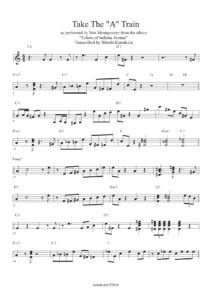 |
|
| Wes Montgomery Essential Jazz Lines (Mel Bay) |
 |
Wes Montgomery Essential Jazz Lines (Mel Bay) |
| Wes Montgomery Jazz Guitar Artistry arr. by Zafar Soood with TABs |
 |
Wes Montgomery Jazz Guitar Artistry arr. by Zafar Soood |
| Wes Montgomery Jazz No Blues Guitar |
 |
|
| Wes Montgomery The Early Years (Mel Bay) Jazz Guitar Solos Tablature |
 |
Wes Montgomery The Early Years (Mel Bay) Jazz Guitar Solos Tablature |
| Wes Montgomery The End Of A Love Affair Guitar Tabs |
 |
|
| West Side Story – Somewhere (Voice and Piano) Leonard Bernstein | West Side Story – Somewhere | |
| West Side Story (The Musical) Vocal Score Arthur Laurents, Leonard Bernstein, Stephen Sondheim |
 |
West Side Story Vocal Score – Leonard Bernstein |
| Westlife – Cant Lose What You Never Had | ||
| Westlife – Flying Without Wings | ||
| Westlife – If I Let You Go | ||
| Westlife – Mandy | ||
| Westlife – You Raise Me Up Guitar arr. with TABs | Westlife – You Raise Me Up Guitar arr. with TABs | |
| Westlife Unbreakable Greatest Hits |
 |
 |
| Wet Wet Wet – Love Is All Around | ||
| Wexford Carol (Musescore File).mscz | ||
| Wham , George Michael And Me By Andrew Ridgeley (Book) |
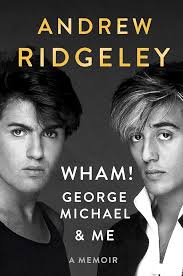 |
|
| Wham Make It Big Piano Vocal Guitar Chords |
 |
Wham Make It Big Piano Vocal Guitar Chords |
| What a Wonderful World – Thiele & Weiss |
 |
|
| What a wonderful world – Louis Armstrong.mscz | ||
| What A Wonderful World (Lead Sheet With Lyrics ) Musescore File.mscz | ||
| What a Wonderful World (lead sheet) – Thiele & Weiss | What a Wonderful World (lead sheet) – Thiele & Weiss | |
| What A Wonderful World (Musescore File).mscz | ||
| What a wonderfull World (Jazz Standard) Guitar Tablature TABs | What a wonderfull World (Jazz Standard) Guitar Tablature TABs | |
| What A Wonderlful World (Lead Sheet) (Musescore File).mscz | ||
| What You’re Made Of – Même Si (Lucie Silvas – Grégory Lemarchal | ||
| What’s That Sound An Introduction To Rock And Its History By John Covach And Andrew Flory (Book) |
 |
|
| When A Man Loves A Woman Calvin Lewis & Andrew Wright |
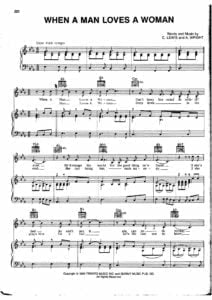 |
|
| When Almonds Blossomed – Giya Kancheli | When Almonds Blossomed – Giya Kancheli-1 | |
| When Almonds Blossomed (Musescore File).mscz | ||
| When I Fall In Love – Victor Young (Bill Evans Ver.) (Musescore File).mscz | ||
| When I fall in love Bill Evans version | When I fall in love Bill Evans version | |
| When I’m Sixty-Four (Beatles) | ||
| When Lights Are Low (Benny Carter) As Played By Miles Davis (Musescore File).mscz | ||
| When The Saints Go Marchin In – Gospel Traditional Folk song (Piano solo with Lyrics) | When The Saints Go Marchin In – Gospel Traditional Folk song (Piano solo with Lyrics) SAMPLE | |
| When The Saints Go Marching In – Fun piano arrangement | When The Saints Go Marching In – Fun piano arrangement | |
| When you told me you loved me (Jessica Simpson) | ||
| When You Wish Upon A Star (Musescore File).mscz | ||
| When You Wish Upon A Star (From The Film Pinocchio) Easy Piano Solo Arr. Sheet Music (Musescore File).mscz | ||
| When You Wish Upon A Star (Leigh Harline and Ned Washington) from Pinocchio Jazz Piano Solo arr. sheet music | When You Wish Upon A Star (Leigh Harline and Ned Washington) from Pinocchio Jazz Piano Solo arr. sheet music | |
| When You Wish Upon A Star (Solo Piano Arr ) David Dinh |
 |
|
| When You’re Gone (Avril Lavigne) | ||
| When You’re Smilling (Musescore File).mscz | ||
| Where have all the-flowers gone (guitar & voice) | Where-have-all-the-flowers-gone (guitar & voice) | |
| While your lips are still red (Nightwish) | ||
| Whistling away the dark (Darling Lili OST) Henry Mancini | ||
| White Album 2 Ending 3 Sayonara No Koto |
 |
|
| White Christmas -Irving Berlin – Piano sheet music |
 |
|
| White Christmas Irving Berlin (Musescore File).mscz | ||
| White Christmas Medley (Liberace) | ||
| White skin like the moon (Jane Eyre 2011 OST) Dario Marianelli | ||
| Whitesnake – Here I Go Again |
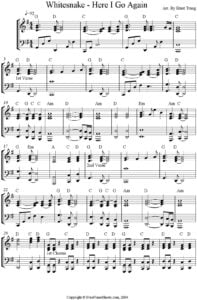 |
|
| Whitesnake Guitar Collection with TABs |
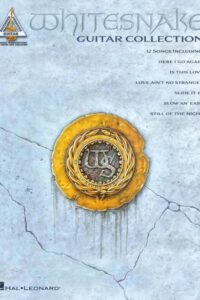 |
Whitesnake Guitar Collection with TABs |
| Whitesnake Is This Love Piano Vocal Guitar Chords | Whitesnake Is This Love Piano Vocal Guitar Chords | |
| Whitney Houston – Jesus Loves Me Sheet Music |
 |
|
| Whitney Houston The Best Of |
 |
Whitney Houston, The Best Of |
| Whitney Houston – I Will Always Love You | ||
| Whitney Houston – It’s Easy To Play Whitney Houston |
 |
Whitney Houston – It’s Easy To Play Whitney Houston |
| Whitney Houston – Saving All My Love For You | ||
| Whitney Houston – The Greatest Hits |
 |
Whitney – The Greatest Hits |
| Whitney Houston – The Greatest Love Of All | ||
| Whitney Houston I will always love you | Whitney Houston – I Will Always Love You | |
| Whitney Houston My Love Is Your Love |
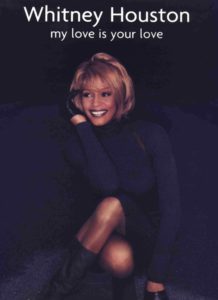 |
Whitney Houston My Love Is Your Love |
| Who wants to live forever (Queen) | ||
| Whole New World Sheet Music, A – Alan Menken |
 |
|
| Why Jazz? A Concise Guide – Kevin Whitehead (book) |
 |
|
| Wicked The Musical Sheet Music Full song Book Music and lyrics by Stephen Schwartz |
 |
Wicked the musical contents — Wicked The Musical Sheet Music Full Book |
| Wieck – Piano Studies | ||
| Wiklund Adolf Fran Mitt Fonster (From my Window) Piano Solo |
 |
|
| Wild – Fantasy On Gershwin’s Porgy And Bess | Wild Fantasy On Gershwin’s Porgy And Bess | |
| Wild Gershwin Seven Virtuoso Etudes | Wild Gershwin Seven Virtuoso Etudes | |
| Wild, Earl – Gershwin Étude No. 4 based on Embraceable You Piano | Wild, Earl – Gershwin Etude No. 4 based on Embraceable You Piano | |
| Wilde Theme (Debbie Wiseman) | ||
| Wilhelm Kempff Musik Des Barock Und Rokoko – Nr. 13 Menuett G-Moll G.F. Händel (Musescore File).mscz | ||
| Will B. Morrison – Melody in F (Syncopated Waltz) sheet music |
 |
|
| Will Young – Anything Is Possible | ||
| William Best I Love You For Sentimental Reasons (Jazz Standard) | William Best I Love You For Sentimental Reasons (Jazz Standard) | |
| William Eveleth – Blues Jazz and Rock Riffs For Keyboards |
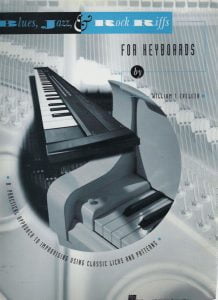 |
